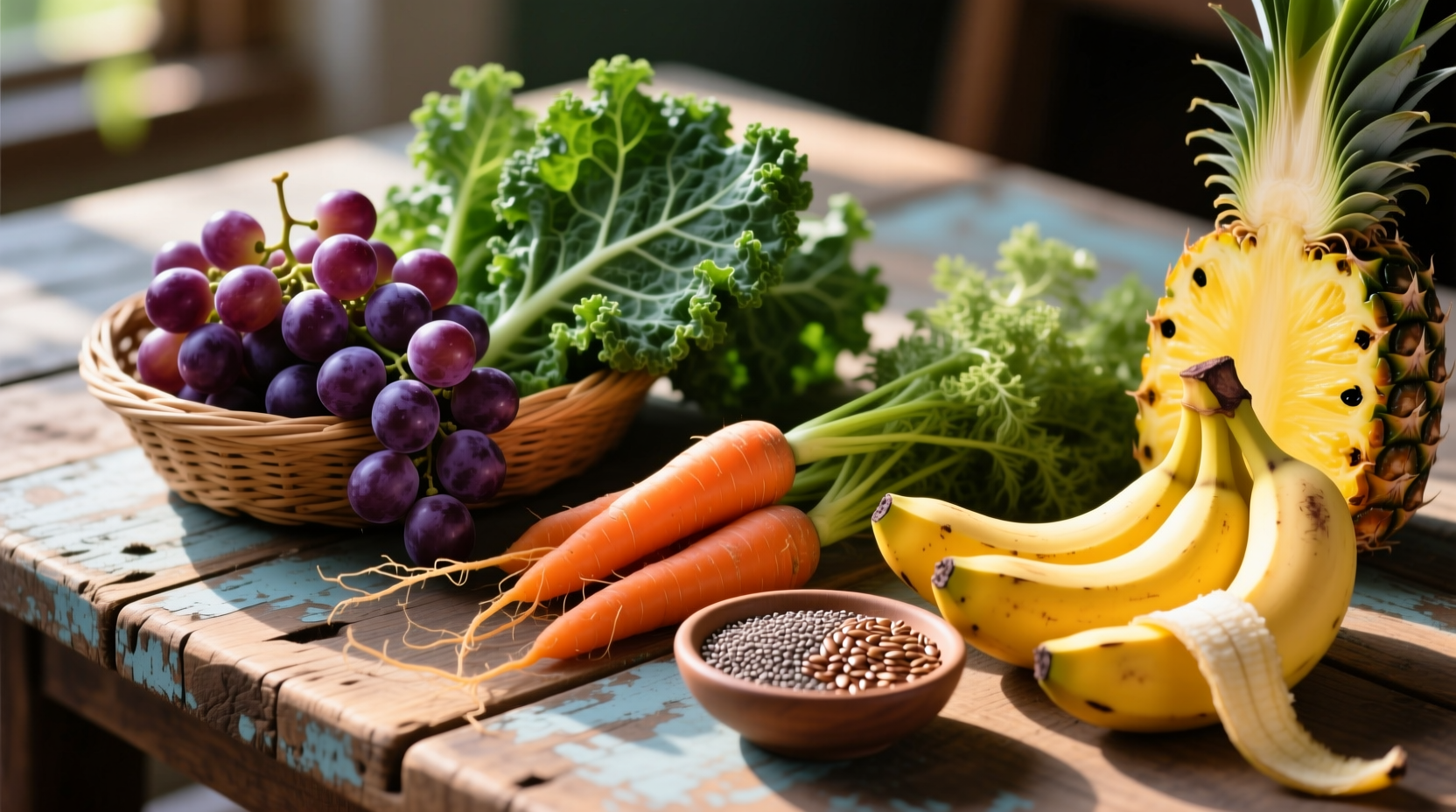Why Fiber Matters More Than You Think
Understanding which foods contain the most fiber isn't just trivia—it's foundational for digestive health, blood sugar management, and long-term disease prevention. Recent research from the USDA FoodData Central confirms that most adults consume only half the recommended daily fiber intake. The National Academy of Medicine recommends 25 grams daily for women and 38 grams for men under 50, yet average consumption falls around 15-17 grams.
Your High-Fiber Food Roadmap
When searching for what food has the most fiber, you need context beyond raw numbers. Some high-fiber foods deliver concentrated doses in small servings, while others provide substantial amounts through typical portion sizes. Let's explore both perspectives.
The Absolute Fiber Champions (Per 100g)
| Food | Total Fiber (g/100g) | Soluble Fiber | Insoluble Fiber |
|---|---|---|---|
| Psyllium husk | 70-85 | High | Moderate |
| Chia seeds | 34.4 | Moderate | High |
| Flaxseeds | 27.3 | Moderate | High |
| Black beans (cooked) | 8.7 | Moderate | Moderate |
| Raspberries | 6.5 | High | Moderate |
Data sourced from USDA FoodData Central (2023 release). Note that psyllium husk is primarily used as a supplement rather than a whole food.
Practical High-Fiber Choices for Daily Eating
While chia seeds win on concentration, most people benefit more from high fiber foods for digestion that fit naturally into meals. Consider these realistic options:
- 1 cup cooked lentils: 15.6g fiber (62% of daily needs)
- 1 medium artichoke: 10.3g fiber (41% of daily needs)
- 1/2 cup black beans: 7.5g fiber (30% of daily needs)
- 1 cup raspberries: 8g fiber (32% of daily needs)
- 1/4 cup almonds: 4.3g fiber (17% of daily needs)

The Fiber Timeline: How Science Changed Our Understanding
Our knowledge of dietary fiber has evolved significantly. In the 1970s, researchers like Dr. Denis Burkitt first connected high-fiber diets with lower rates of colon cancer after observing African populations consuming traditional high-fiber diets. The National Academy of Sciences didn't establish formal fiber recommendations until 2002, and current research reveals fiber's role extends far beyond digestion—it influences gut microbiome composition, inflammation levels, and even mental health through the gut-brain axis.
Avoiding Common Fiber Pitfalls
When incorporating the best plant-based sources of dietary fiber into your diet, consider these context boundaries:
- Hydration is non-negotiable: Without adequate water, high fiber intake can cause constipation rather than prevent it
- Gradual increase is essential: Jumping from low to high fiber too quickly causes gas and bloating
- Medical conditions matter: People with IBS, Crohn's disease, or recent bowel surgery may need modified fiber approaches
- Supplements aren't equivalent: Whole food sources provide vitamins, minerals, and phytonutrients missing in isolated fiber supplements
Tailoring Fiber to Your Needs
The how much fiber per day for adults question has nuanced answers. While general recommendations exist, individual needs vary:
- Weight management: Higher fiber intake (30g+) promotes satiety and reduces overall calorie consumption
- Blood sugar control: Soluble fiber from oats, beans, and fruits slows glucose absorption
- Heart health: 25-30g daily from diverse sources lowers LDL cholesterol
- Senior nutrition: Older adults often need more fiber but may require softer options like cooked vegetables and oatmeal
Putting It All Together: Your Fiber Action Plan
Start with these practical steps to boost your top 10 high fiber foods for weight loss intake without discomfort:
- Replace one refined grain serving daily with a whole grain alternative (brown rice instead of white, whole wheat pasta)
- Add 2 tablespoons of chia or flaxseeds to morning smoothies or yogurt
- Keep frozen berries on hand for quick high-fiber additions to meals
- Choose snacks with at least 3g fiber per serving (apple with almond butter, edamame)
- Gradually increase portions over 3-4 weeks to allow your digestive system to adapt
Frequently Asked Questions
Which fruit has the highest fiber content per serving?
Raspberries contain the most fiber among common fruits with approximately 8 grams per cup. Other high-fiber fruits include blackberries (7.6g/cup), pears with skin (5.5g medium pear), and avocados (6.7g per cup). Berries generally provide more fiber than tropical fruits, making them excellent choices for high fiber foods for digestion.
How can I get 30g of fiber daily without supplements?
Achieving 30g of fiber through whole foods is achievable with strategic planning: Start with oatmeal topped with berries (8g), include a large salad with chickpeas for lunch (10g), snack on an apple with almonds (5g), and finish with stir-fried vegetables and brown rice for dinner (9g). This approach provides not only fiber but also essential vitamins, minerals, and phytonutrients found in the best plant-based sources of dietary fiber.
Does cooking affect the fiber content of vegetables?
Cooking generally doesn't significantly reduce total fiber content, though it may convert some insoluble fiber to soluble fiber. Steaming preserves more fiber than boiling, which can leach some soluble fiber into water. Interestingly, cooking tomatoes increases their lycopene availability while maintaining fiber content. For maximum benefit from high fiber foods for digestion, vary your preparation methods—some vegetables provide more fiber raw (broccoli), while others offer better nutrient absorption when cooked (carrots).
Are there risks to consuming too much fiber?
Yes, excessive fiber intake (above 70g daily) can cause digestive discomfort, interfere with mineral absorption, and exacerbate symptoms for people with certain gastrointestinal conditions. The National Institutes of Health notes that sudden increases in fiber without adequate hydration can lead to constipation rather than relief. Those with irritable bowel syndrome, Crohn's disease, or recent bowel surgery should consult healthcare providers about appropriate fiber intake levels. Gradual increases and proper hydration mitigate most top 10 high fiber foods for weight loss related issues.











 浙公网安备
33010002000092号
浙公网安备
33010002000092号 浙B2-20120091-4
浙B2-20120091-4